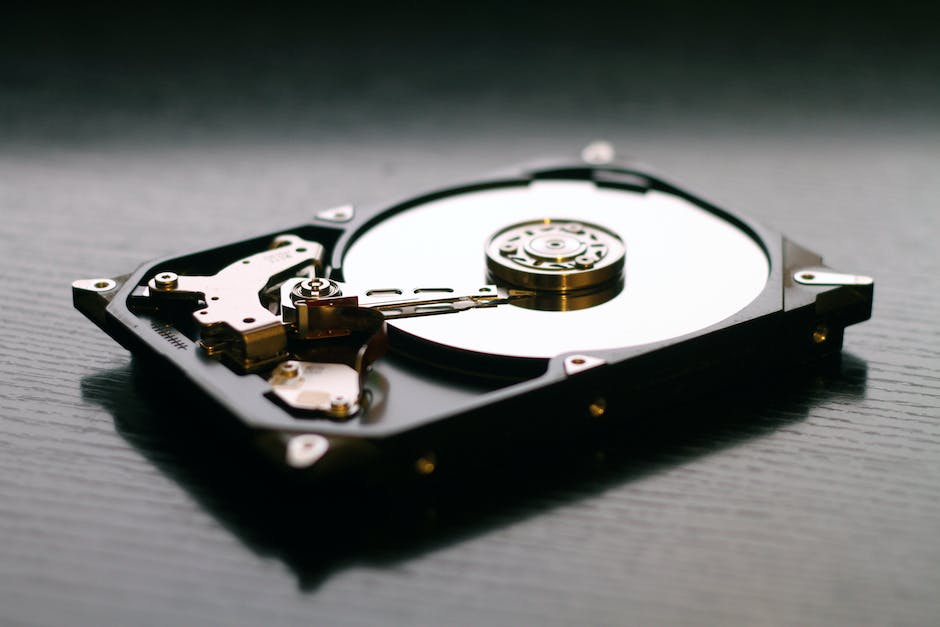In today’s tech-dominated world, the ability to manage, analyze, and visualize data is an invaluable asset. Here’s where RStudio comes into play. RStudio is an integrated development environment (IDE) specifically designed for R, a programming language for statistical computing and graphics. Its user-friendly interface and powerful features make it a preferred choice for data analysis and visualization among statisticians, data scientists, and researchers.
But why is RStudio important in the tech industry? The answer lies in the increasing significance of data. As organizations continue to generate and gather vast amounts of data, the need for tools that can help interpret this data effectively and efficiently is more critical than ever. RStudio, with its versatile capabilities, fits the bill perfectly.

A Brief Look into the Origin of RStudio
RStudio was born out of the need for a more inclusive and interactive interface for R. It was developed by JJ Allaire, a software engineer and entrepreneur, who recognized the potential of R and sought to make it more accessible and user-friendly. Since its launch in 2010, RStudio has undergone numerous updates and enhancements, evolving into a comprehensive tool that caters to the diverse needs of its users.
Understanding the Interface of RStudio
At first glance, the RStudio interface may seem daunting, but once you understand the layout, it becomes quite intuitive. The interface is divided into four main panels: the script, console, environment, and graphical output panels.
The script panel is where you write your R code. It’s like your workspace where you experiment with code, develop functions, and test different approaches. The console panel is where your code gets executed. Here you can see the results of your R commands and troubleshoot any errors that might occur.
The environment panel gives you a real-time view of your variables, data frames, and other objects that you’ve created during your session. Lastly, the graphical output panel is where you can view plots, charts, and other visualizations generated by your code. Understanding these key components of the RStudio interface is the first step towards leveraging its full potential.
Exploring Key Features of RStudio
While there are numerous features of RStudio that make it a valuable tool in the tech industry, we’ll focus on those that significantly improve productivity and efficiency of data analysis. These features not only make RStudio user-friendly but also streamline the coding process, making data analysis more efficient.
Coding Assistance and Syntax Highlighting
Ever found yourself stuck in a coding rut, struggling with syntax errors? RStudio provides coding assistance that makes writing in R easier. One of the key features of RStudio is its auto-completion capability. This feature suggests possible completions for your typing, reducing the chances of syntax errors. Isn’t that handy?
RStudio also does an excellent job of highlighting syntax errors. It does this by underlining the problematic code, allowing you to quickly identify and correct any mistakes. This feature is especially useful for beginners who are still familiarizing themselves with R syntax.
Additionally, RStudio’s syntax highlighting feature enhances readability of your code. It color-codes your script, making it easier to differentiate between variables, functions, and arguments. This can save you time when debugging or reviewing your code.
Integrated Development Environment (IDE)
What is an Integrated Development Environment (IDE) you ask? An IDE is a software application that provides comprehensive facilities to computer programmers for software development. RStudio serves as an IDE for R, making the coding, testing, and debugging process much simpler.
With RStudio, you can write code, execute it, and view the results all in one place. This integrated approach reduces the need to switch between different applications, increasing your productivity. Furthermore, RStudio’s IDE provides a number of powerful debugging tools, making it easier to identify and fix errors in your code. Who wouldn’t want a smoother coding experience?
The Role of RStudio in Data Analysis and Visualization
RStudio is not just a coding tool. It plays a significant role in data analysis and visualization, key aspects in the field of data science. RStudio provides a wide range of tools for manipulating, analyzing, and visualizing data, making it a go-to tool for data scientists and statisticians.
With RStudio, you can conduct complex data analysis tasks, from data cleaning and transformation to statistical modeling. But what makes RStudio stand out is its robust data visualization capabilities. With libraries like ggplot2 and plotly integrated within RStudio, creating high-quality graphs, plots, and charts is a breeze. This makes RStudio an invaluable tool in communicating data-driven insights.
So, whether you’re a data scientist, a statistician, or just someone interested in data analysis, RStudio can be a powerful tool in your arsenal. Are you ready to harness the power of RStudio in your data analysis journey?
Learning RStudio: Required Skills and Resources
Before you start using RStudio, there are a few skills you should ideally have or be willing to learn. First and foremost, you need to have a basic understanding of R, the programming language that RStudio is built to support. Additionally, a basic understanding of statistics can be beneficial, as R is often used for statistical analysis. Lastly, familiarity with data structures and concepts such as functions, loops, and conditional statements can be very useful.
There are several resources available to help you learn these skills. Websites like Codecademy and DataCamp offer interactive courses on R and data science. Additionally, the official RStudio website has a wealth of tutorials and guides to help you get started.
Getting Started with RStudio: Installation and Setup
Now that you know what skills you need, let’s talk about how to get RStudio up and running on your machine. The first step is to download the software. RStudio offers different versions, but for beginners, the free version is usually more than sufficient. You can download it from the official RStudio website.
Once you’ve downloaded the installer, run it to install RStudio on your system. The process is fairly straightforward, but if you run into any issues, there are plenty of tutorials online that can guide you through the process.
After you have installed RStudio, you’ll need to do some initial configuration. This includes setting your working directory, which is the folder where RStudio will save your scripts and other files. You can set this in the Global Options menu, under the ‘General’ tab.
Using RStudio in Real-World Projects
Now that you’re set up, you may be wondering: what can you actually do with RStudio? Well, the possibilities are almost endless. RStudio is used in a wide variety of industries, from tech and finance to healthcare and academia.
In the tech industry, RStudio can be used to perform complex data analysis, create data visualizations, and even build machine learning models. For example, a data analyst might use RStudio to clean and analyze large datasets, while a data scientist might use it to build a predictive model.
In finance, RStudio can be used to analyze financial data, build trading algorithms, or create risk models. In healthcare, it can be used to analyze patient data, conduct medical research, or predict disease outbreaks.
Regardless of the industry, having RStudio skills can be a major asset. It’s a powerful tool that can help you work more efficiently, make better decisions, and ultimately, advance your career.

Advantages and Disadvantages of Using RStudio
Choosing a software tool always involves weighing its advantages and disadvantages. So, what are the benefits and drawbacks of using RStudio?
On the plus side, RStudio offers an all-in-one integrated development environment for R. It combines a source editor, console, data viewer, and debugging tools in a single interface. This makes it especially user-friendly for newcomers to R. Additionally, its powerful coding assistance, with features like syntax highlighting and auto-completion, can speed up the coding process and reduce errors.
RStudio also shines in its excellent support for data visualization. It seamlessly integrates with popular R packages like ggplot2, allowing for the creation of high-quality graphs and charts. This is a major selling point for data scientists and analysts who need to present their data in a visually engaging manner.
However, RStudio is not without its drawbacks. As a heavy-duty software, it requires a substantial amount of system resources, which might slow down older or less powerful computers. Some users also find its multitude of features and options overwhelming at first. Lastly, while RStudio offers many advanced features, it does not have the extensive library of plugins available in some other IDEs, such as Visual Studio Code or Atom.
Future Prospects of Using RStudio in Tech Careers
Now that you understand what RStudio is and how it works, you might be wondering: what does this mean for your career in tech? What roles and industries value RStudio skills? And how relevant will this tool be in the future?
In the current job market, RStudio is highly valued in roles that involve data science, statistics, and machine learning. Jobs like data analyst, data scientist, and statistician often require or prefer candidates with experience in R and RStudio. Similarly, industries like healthcare, finance, and marketing, where big data analysis is crucial, often seek professionals with these skills.
Looking ahead, the demand for RStudio skills is likely to grow. With the increasing importance of data-driven decision making in business, there is a rising need for professionals who can analyze and interpret complex data. As a tool designed specifically for this purpose, RStudio is well-positioned to continue growing in relevance.
Final Thoughts and Next Steps
In conclusion, RStudio is a powerful and versatile tool for anyone working with R, particularly those in data-focused roles. Its integrated development environment, coding assistance, and data visualization capabilities make it a valuable asset for improving productivity and efficiency in data analysis.
However, like any tool, it has its pros and cons. While its user-friendly interface and extensive features are major advantages, its resource demands and potentially overwhelming options could be seen as drawbacks. Understanding these factors is crucial when considering whether to learn and use RStudio.
So, what’s the next step? If you’re interested in pursuing a career in data science or analytics, or if you’re already in the field and want to enhance your skills, learning RStudio is a worthwhile investment. Start with the basics, practice regularly, and before you know it, you’ll be using RStudio to streamline your data analysis and create stunning visualizations. Ready to get started?
